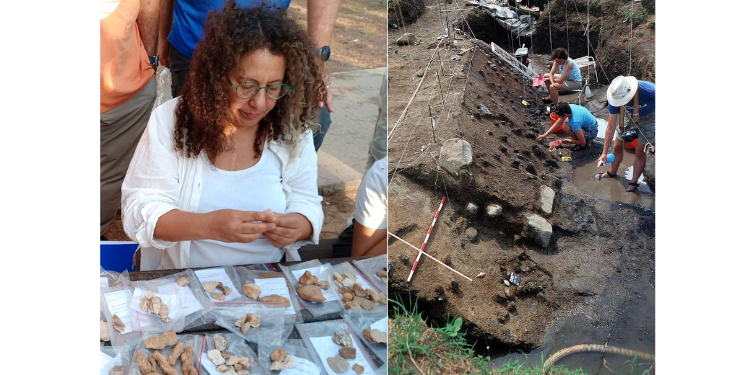Paleo Dieters, This Research Might Upset You
Contrary to the common belief that ancient hunter-gatherers primarily ate meat – new research shows their diet also included abundant plant-based foods

Plants were a central component in the diet of ancient hunter-gatherers, claims a new and revolutionary archaeological study. This contradicts the prevailing belief that their diet was mainly based on animal food – a concept that inspired, among other things, the Paleo diet.
Until recently, regarding food remains, archaeological-prehistoric sites mainly yielded animal bones, which contributed to the perception that ancient societies' diet was primarily meat-based. Other studies linked animal protein consumption to human brain development and the evolution of humans as social beings, whose relationships with others were connected to group hunting.
Now, in a study conducted near Gesher benot Ya'aqov Jordan River, starch granules dating back approximately 780,000 years were found. The granules, originating from oak acorns, grains, legumes, and edible water plants like yellow water lilies and water chestnuts, were found on basalt hammerstones (crushing and pounding tools) and anvils (crushing surfaces). This is the world's earliest evidence of plant food processing by humans.
Proven: Ancient Humans Ate Plants
The site is located on the shores of the ancient Hula Lake, in an environment that was rich in plants and animals. Throughout history, humans repeatedly returned to it, and more than twenty settlement layers were found at the site. Excavations revealed findings from different periods, including tools made of basalt, flint, and limestone; fossil remains of animals such as elephants, fallow deer, gazelles, and fish; and bones showing cutting and cracking marks – indicating bone marrow consumption.
Additionally, a wide variety of plant remains were found at the site: starch granules from acorns, grains, seeds, and fruits. These edible plants were gathered throughout all seasons, from different habitats, both aquatic and terrestrial. The findings show that some plants were also collected from other locations and brought for processing at this settlement point.
The starch remains were found on crushing tools, establishing, for the first time, a direct link between the plants and the tools used to process them. Crushing and pounding plant food served as an initial breakdown method facilitating digestion. The processing tools were found near fire sites – which might have been used for cooking plants or neutralizing toxins present in some of them. All these indicate regular consumption of starch granules as plant food.

Prof. Nira Alperson-Afil, image credit: Prof. Boaz Zissu, GBY
The Importance of Starch in Human Evolution
Starch, which is a complex sugar molecule, is abundant in tubers, nuts, and roots, and plays an important role in human evolution. Starch-rich plants provided essential carbohydrates for the increased energy demands of the human brain.
Starch granules have high preservation capability, and when discovered in archaeological sites, they help understand what area residents ate hundreds of thousands of years before the development of agricultural societies. Alongside starch, the processing tools at the site also contained remains of pollen, diatoms, rodent hair, water bird feathers, and more, which also preserved for hundreds of thousands of years. These strengthen the reliability of the starch findings.
The research team included Prof. Nira Alperson-Afil and Dr. Yoel Melamed from Bar-Ilan University, Dr. Hadar Ahituv, now from Haifa University, Prof. Naama Goren-Inbar from the Hebrew University, Prof. Amanda Henry from Leiden University, Netherlands, and additional research institutes abroad.